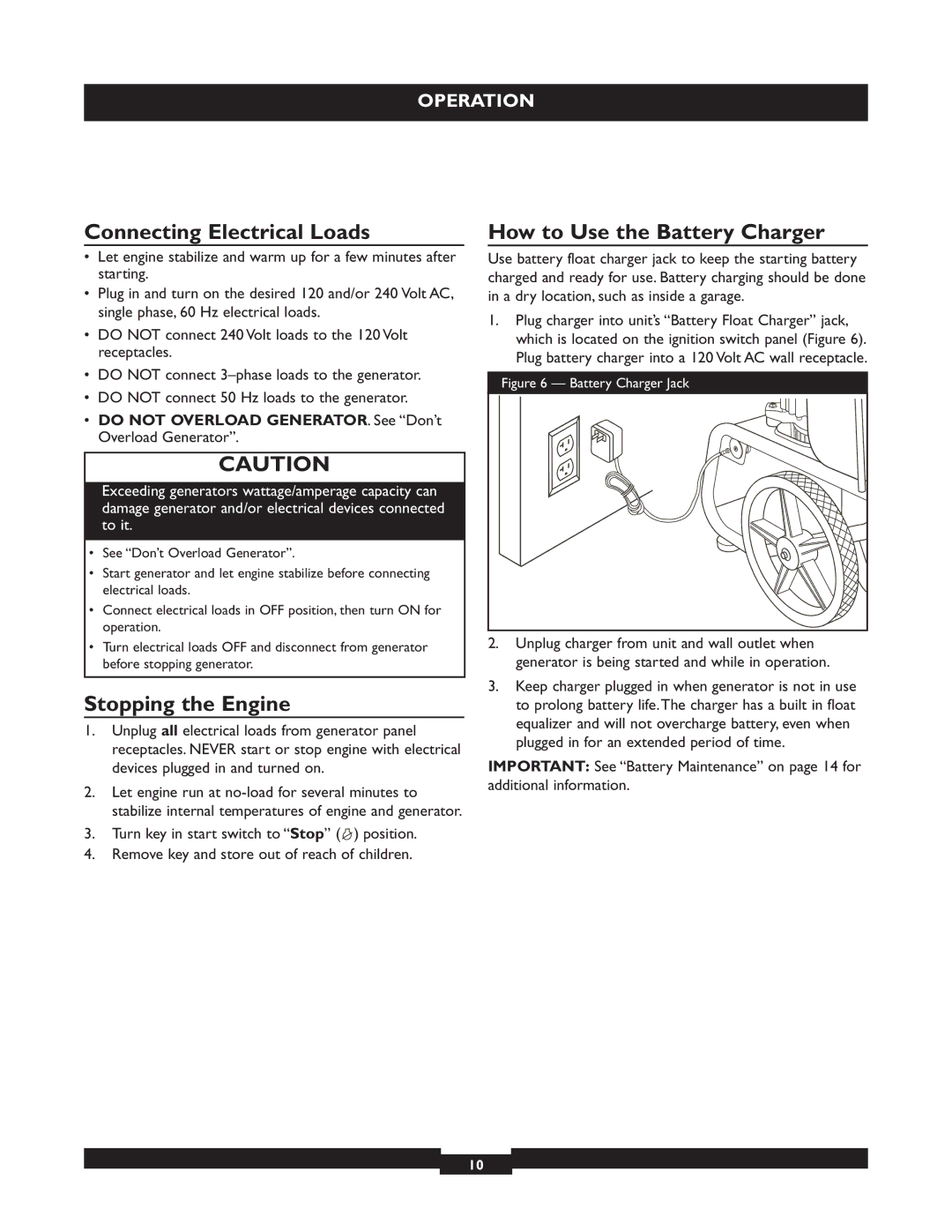30205 specifications
Briggs & Stratton 30205 is a powerful and versatile portable generator that combines reliability with advanced technology, making it an excellent choice for home use, outdoor activities, or emergency power supply. Designed to deliver consistent performance, the 30205 model is equipped with a host of features that cater to both casual users and those who require a dependable power source during outages.One of the standout features of the Briggs & Stratton 30205 is its sturdy 306cc engine, which is engineered for efficient fuel consumption and reduced emissions. This gasoline-powered engine generates an impressive 3,500 watts of starting power and 3,000 watts of running power, ensuring that it can handle a variety of applications, from powering appliances to running tools on the job site.
Durability is a hallmark of Briggs & Stratton products, and the 30205 does not disappoint. It features a rugged steel frame that provides protection against physical damage while enhancing stability during operation. The compact and portable design, complemented by durable wheels, allows for easy transport, making it a popular choice for camping trips or tailgate parties.
Technologically, the 30205 is equipped with an intuitive control panel that includes multiple outlet options, allowing users to connect different devices simultaneously. This generator includes both 120V and 120/240V outlets, providing flexibility for various power needs. Additionally, it incorporates a low oil shutdown feature to protect the engine from damage, automatically turning the generator off when oil levels are critically low.
For ease of use, the Briggs & Stratton 30205 also boasts a recoil start mechanism that ensures reliable operation regardless of conditions. Maintenance is made simple with easily accessible components, so users can keep the generator in peak condition with minimal effort.
In conclusion, the Briggs & Stratton 30205 represents a well-rounded solution for anyone in need of portable power. With its robust engine, durability, and user-friendly features, it stands out as a reliable option for both everyday use and emergencies. Whether for home back-up power or outdoor adventures, the 30205 generator is a practical investment for peace of mind.

